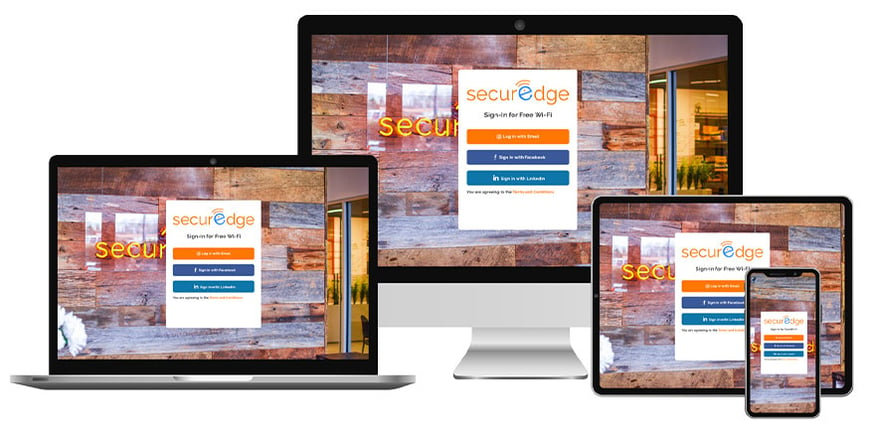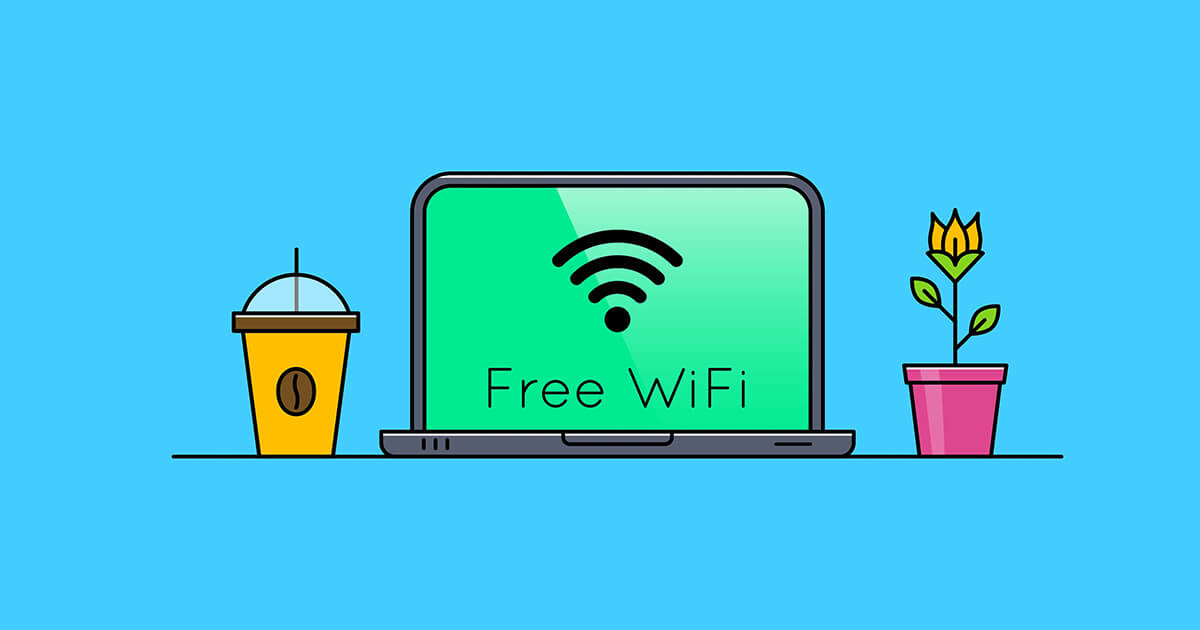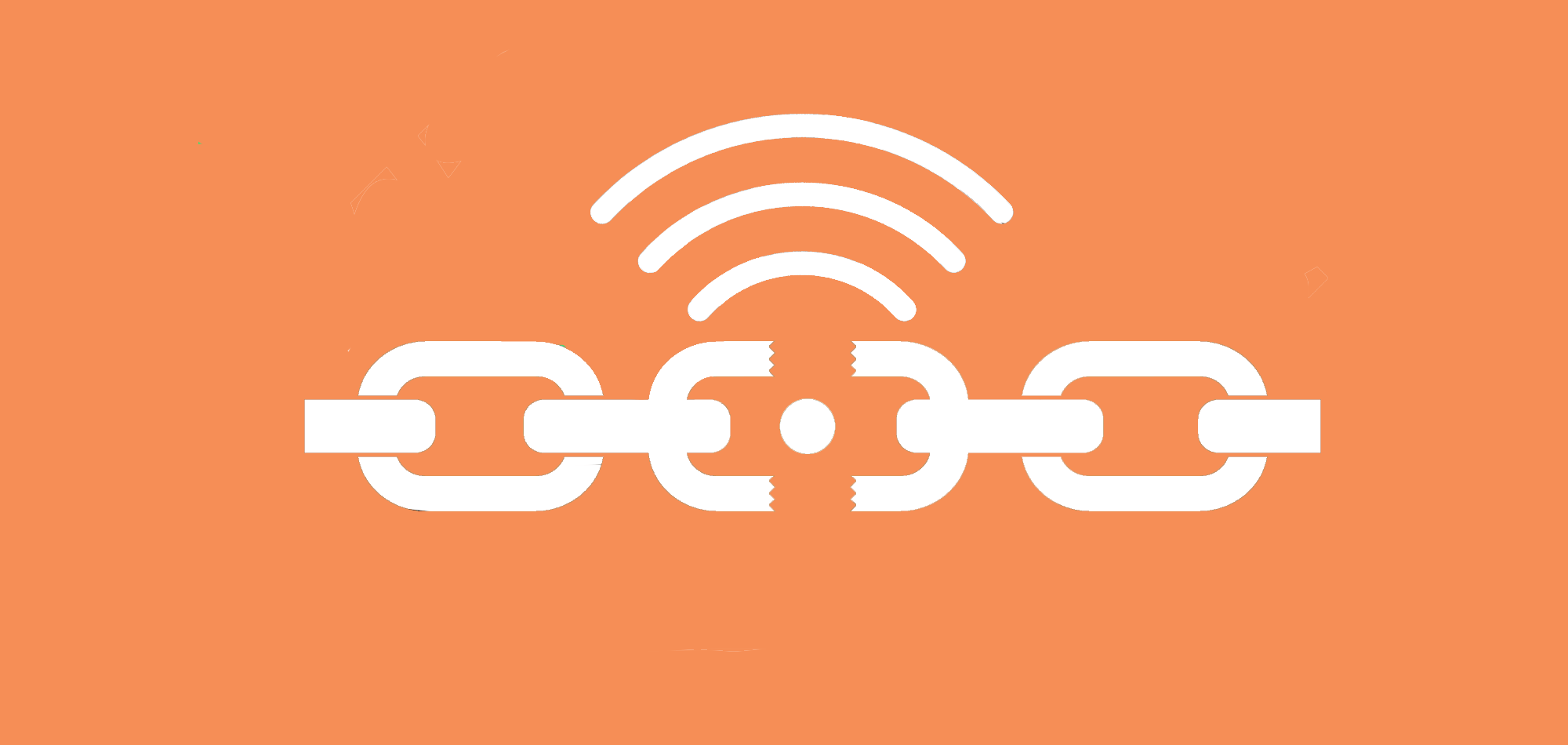
When you offer Guest WiFi at your retail location, you are creating a bridge between your brand and your customers. This bridge allows for give-and-take, a mutually beneficial exchange: You provide free WiFi access for your customers, and in return, your customers provide some information about themselves (for example, their email address) to help you better understand and serve them.
If you’re researching captive portal solutions, chances are, you are already offering guest WiFi at your retail location. Now it’s definitely time to think about setting up a captive portal, as we’ll explain below.
What is a Captive Portal?
The word “captive” refers to the fact that a customer trying to access your guest WiFi network needs to allow some of their information to be captured in order to log on. And a “portal” is a gateway, in this case, the gateway to a secure online browsing experience for your customer. However, "captive portal is the technical term; it is better known as a guest splash page!
But a captive portal isn’t just a gateway; it’s also a gatekeeper, blocking devices from accessing your network without the proper credentials. Think of your captive portal as a friendly—but muscly—bouncer, giving legitimate customers access to the network while keeping hackers out.
From a marketing, security, and technical standpoint, setting up a captive portal for your guest WiFi is enormously beneficial — and here's how.
Marketing
A well-designed, well-executed captive portal page welcomes your customers with a friendly message and maybe even your company’s logo, and invites them to log into your guest WiFi network. It’s a brief but important branding moment, reminding the customer that by providing free WiFi, your company is trying to make life just a bit easier and more enjoyable for them (in other words, your company gets credit where credit is due!).
Security
Using a captive portal also distinguishes your guest WiFi network from potential imitations used by hackers who would like to steal your customers’ information. A formally branded captive portal page sets your network apart from look-alikes who may even cleverly name their network something benign like “free public WiFi” to trick customers into logging in.
Legal
A captive portal can also be the point at which the customer is presented with an acceptable use policy, in which you as owner of the WiFi network lay out a basic agreement that can protect you from liability in the event a user commits illegal activity or makes a bad decision (like providing credit card information to a spammy website) over your network.
Technical
When providing guest WiFi access, it’s so important to segment, or separate, guest traffic from your internal WiFi users and applications. In other words, there’s no reason why customers shopping in your store should be logging into the same WiFi network that supports your point-of-sale, accounting, and payroll applications. Your captive portal helps funnel guest WiFi users down the appropriate lane of WiFi traffic, so to speak.
(Note: Network segmentation is tricky, and it’s best to partner with certified wireless experts rather than trying to take this on in-house.)
The Power of Data for Retail
Data analytics are becoming more and more important across all industries, especially retail. We’re using our smartphones for everything now, and we’re leaving massive trails of data behind. This data can be used for good: When customers agree to certain terms and allow certain pieces of their data to be accessed by a store or brand, that data can be aggregated and analyzed over time in order to help understand how customers behave and what they want.
But customer data can also be used for not-so-good, as in, identity theft and other forms of fraud. Data privacy is rightly a big deal (i.e. the 2013 Target credit card information breach). That’s why employing a captive portal for your guest WiFi network is so important: it provides a safe, secure Internet browsing experience for your customers, and —with their permission— data that will help you cater to your audience and attract new business.
How Can SecurEdge Help with Captive Portals?
We’re glad you asked. SecurEdge Guest Services can help your company attract, retain, and delight customers with a safe and secure online experience in your store. Your guest WiFi network’s captive portal page is the first step.
SecurEdge can provide you with the tools to create a customizable splash page that is pleasing to the eye and checks all the necessary technical and legal boxes. Once customers log in through this page, you’ll be able to learn from their activity and decisions made while logged in to your network. And you’ll be able to communicate with them in the future, sending them promotions and offers to draw them back into your store.
Upgrading Your Guest WiFi Experience
A captive portal is a touchpoint with your customers, and every touchpoint is an opportunity to build a lasting relationship with them while promoting your brand.
And because relationships go both ways, it’s also an opportunity to provide your customers with an enjoyable online experience and assurances that their information is safe and won’t be susceptible to hacking and data theft.
Isn’t it time to upgrade your guest WiFi experience? SecurEdge can help with your captive portal, and so much more.






